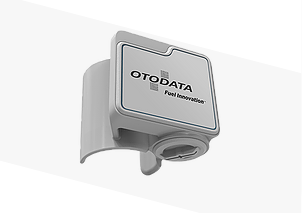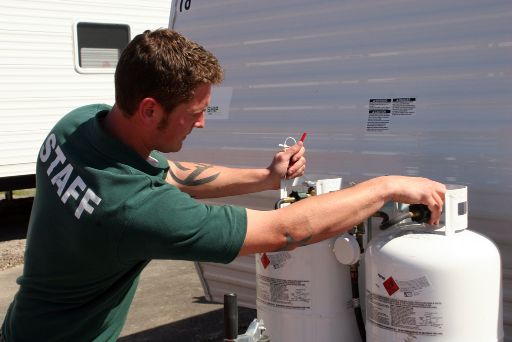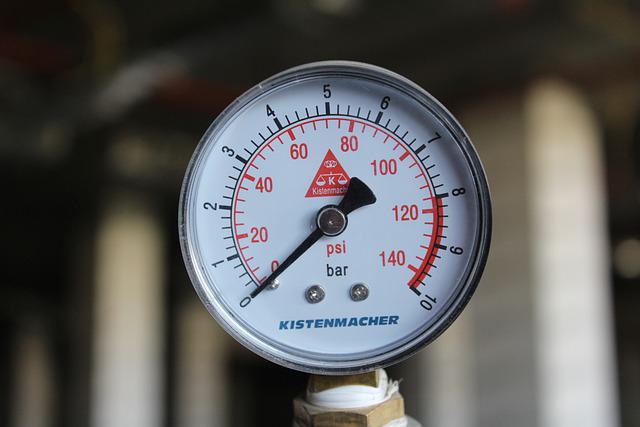
Have you ever found yourself in the middle of a cozy winter evening, only to discover that your propane tank is empty and your heater won’t work?
Or perhaps you’ve been planning a weekend BBQ, and when you go to fire up the grill, you realize there’s not enough propane left. These frustrating situations can be easily avoided with remote propane tank level monitoring.
In this friendly, comprehensive guide, we’ll explore the benefits of remote monitoring, delve into the available technologies, and provide practical advice on choosing the right system for your needs.
By the end of this article, you’ll have all the information you need to optimize your propane usage, ensure timely deliveries, and enhance the safety of your home.
Understanding Propane Tank Level Monitoring
Before we jump into remote monitoring, let’s briefly discuss traditional propane tank monitoring methods. Typically, a tank’s propane level is measured using a gauge located on the tank itself, which displays the remaining percentage or volume. While this method works, it requires manual inspection, which can be time-consuming, inconvenient, and sometimes inaccurate.
Remote monitoring technology offers a more efficient and precise way to keep track of your propane levels. By installing a wireless tank level monitor, you can access real-time information about your propane tank from anywhere, anytime, using your smartphone or computer. This not only saves you the hassle of checking the tank manually but also ensures you’re always aware of your propane consumption and remaining supply.
Remote Monitoring Technologies
There’s a variety of remote monitoring technologies available, each with its own advantages and drawbacks. Let’s explore the most common types of wireless tank level monitors and the communication methods they use.
Wireless tank level monitors
Ultrasonic sensors: These devices use sound waves to measure the distance between the sensor and the liquid surface inside the tank. They are non-intrusive, easy to install, and relatively inexpensive. However, they can be affected by temperature variations and tank shape, which may impact their accuracy.
Pressure sensors: These monitors measure the pressure at the bottom of the tank to determine the propane level. They are known for their accuracy and reliability but require installation by a professional due to the need to access the tank’s interior.
Magnetostrictive sensors: These advanced sensors use magnetic technology to accurately measure the propane level within the tank. They provide high-resolution data and are less affected by temperature fluctuations. However, they can be more expensive than other options and may also require professional installation.
Communication methods
Wi-Fi: Wi-Fi-enabled monitors connect to your home’s wireless network, allowing you to access the tank level data via a smartphone app or web portal. This is a convenient and cost-effective option for homes with reliable internet connections. However, Wi-Fi signals may not reach tanks located far from the router, and network outages can disrupt monitoring.
Cellular networks: Monitors that use cellular networks can transmit data to your device via text messages or mobile apps, even if your home’s Wi-Fi is unavailable. This can be particularly useful for vacation homes or rural properties with limited internet access. However, you’ll need to ensure there’s adequate cellular coverage in your area and consider the potential ongoing costs of a cellular data plan.
LoRaWAN and other low-power wide-area networks (LPWAN): These networks offer long-range, low-power communication solutions that can cover large distances and penetrate obstacles more effectively than Wi-Fi. They are ideal for remote properties or tanks located far from your home. However, the availability of such networks may be limited in some areas, and additional hardware may be required.
Power sources
Battery-powered monitors: These devices use batteries as their primary power source, making them easy to install and maintain. However, you’ll need to periodically replace the batteries, and monitor the battery life to ensure uninterrupted monitoring.
Solar-powered monitors: Solar-powered monitors are a more sustainable option, as they harness sunlight to charge their batteries. These devices are well-suited for outdoor tanks with ample sun exposure. However, they may be more expensive upfront and could require additional maintenance to keep the solar panels clean and functioning efficiently.
Choosing the Right Remote Monitoring System
Now that you’re familiar with the available technologies, let’s discuss how to choose the best remote monitoring system for your specific needs. Here are some key factors to consider:
Tank size and configuration:
Ensure the monitoring solution you choose is compatible with your propane tank’s size, shape, and configuration. Some sensors may not work well with certain tank types, so it’s essential to verify their compatibility before making a purchase.
Distance and network coverage:
Consider the distance between your propane tank and your home, as well as the availability of Wi-Fi, cellular, or LPWAN coverage in your area. This will help you determine the most suitable communication method for your monitoring system.
Budget and ongoing costs:
Evaluate the upfront and ongoing costs associated with different monitoring systems, including equipment costs, installation fees, data plan charges, and maintenance expenses. Choose a system that fits your budget without compromising on essential features or reliability.
Integration with other home automation systems:
If you have an existing smart home ecosystem, look for a propane monitoring system that can integrate seamlessly with your setup. This can provide added convenience and allow you to manage multiple aspects of your home from one central platform.
To help you get started, here are a few popular remote monitoring solutions to consider:
Tank Utility:
Tank Utility offers Wi-Fi-enabled propane tank monitors that can easily integrate with popular smart home platforms, such as Amazon Alexa and Google Home. They provide a user-friendly app with detailed usage data and customizable alerts.
Mopeka:
Mopeka’s wireless propane tank monitors use ultrasonic sensors and are compatible with a wide range of tank sizes. Their smartphone app displays propane levels and consumption data, and the system can also integrate with some RV monitoring systems.
Nee-Vo:
Nee-Vo offers a cellular-based monitoring solution that works well in areas with limited Wi-Fi coverage. Their system sends text message alerts and provides an online dashboard for tracking propane levels.
Smart Oil Gauge:
Although initially designed for heating oil tanks, the Smart Oil Gauge can also be used for propane tanks. It uses an ultrasonic sensor and connects via Wi-Fi, offering real-time monitoring and consumption analytics through a smartphone app.
Installing and Setting Up a Remote Monitoring System
Once you’ve chosen the right monitoring system for your needs, it’s time to install and configure it. Here are some pre-installation considerations and a general installation guide:
Pre-installation considerations:
- Verify compatibility with your propane tank.
- Ensure you have the necessary tools and hardware for installation.
- Choose an optimal location for the monitor that maximizes signal strength and minimizes interference.
Step-by-step installation guide:
- Turn off the propane supply and ensure safety measures are in place.
- Follow the manufacturer’s instructions for installing the sensor or monitor on your propane tank.
- Connect the monitor to your chosen communication network (Wi-Fi, cellular, or LPWAN).
- Set up the corresponding smartphone app or web portal, and create an account if required.
- Test the system to ensure it’s functioning correctly and transmitting data as expected.
Configuring alerts and notifications:
- Customize the alert settings in the app or web portal to receive notifications when propane levels reach a certain threshold or when consumption rates change significantly.
- Set up automatic alerts for low battery life or communication issues to stay informed about the system’s health.
- Configure additional alerts to notify you of potential leaks or abnormal pressure changes within the tank.
Using Remote Monitoring Data for Propane Delivery Planning
With your remote monitoring system in place, you can now use the collected data to make more informed decisions about your propane usage and delivery scheduling.
Analyzing historical usage data:
Review your past propane consumption patterns to identify trends, such as seasonal fluctuations or periods of high demand. This can help you better understand your usage habits and make adjustments as needed.
Estimating future consumption:
Based on your historical data, you can estimate your future propane usage and calculate how long your current supply is likely to last. This information can be invaluable when planning ahead and scheduling deliveries.
Coordinating with propane suppliers for timely deliveries:
Share your propane level data with your supplier to ensure they are aware of your needs and can schedule timely deliveries. Some suppliers may even offer automatic delivery services based on your remote monitoring data, providing added convenience and peace of mind.
Remote Monitoring and Safety Considerations
In addition to improving efficiency and convenience, remote propane tank monitoring can also enhance the safety of your home.
Detecting leaks and abnormal pressure changes:
Remote monitoring systems can identify sudden drops in propane levels or unusual pressure changes, which may indicate a leak or other safety issue. By receiving prompt notifications, you can take action quickly to address the problem and prevent potential hazards.
Integrating with smart home safety systems:
If your remote monitoring system is compatible with your smart home ecosystem, you can integrate it with other safety devices, such as smoke detectors, carbon monoxide alarms, and security systems. This can help create a comprehensive safety network for your home.
Emergency response and notifications:
In the event of an emergency, your remote monitoring system can alert you and your propane supplier, allowing for a quicker response to address the issue and ensure the safety of your property and its occupants.
Conclusion
Remote propane tank level monitoring is a valuable investment for any homeowner who relies on propane for heating, cooking, or other household needs. By choosing the right monitoring system and using the real-time data it provides, you can optimize your propane usage, schedule timely deliveries, and enhance the safety of your home. With the wealth of information and guidance provided in this comprehensive article, you’re now well-equipped to explore remote monitoring options and enjoy the convenience and peace of mind they offer.

Jeremy is a highly experienced professional propane technician with over 21 years of experience in the industry. Throughout his career, he has gained extensive knowledge and expertise in propane gas installation, maintenance, and repair, as well as in ensuring safety and compliance with industry standards. Mike has worked with various residential, commercial, and industrial clients, providing top-notch services and solutions to meet their propane needs. He is dedicated to his craft and passionate about delivering exceptional service to his clients.




